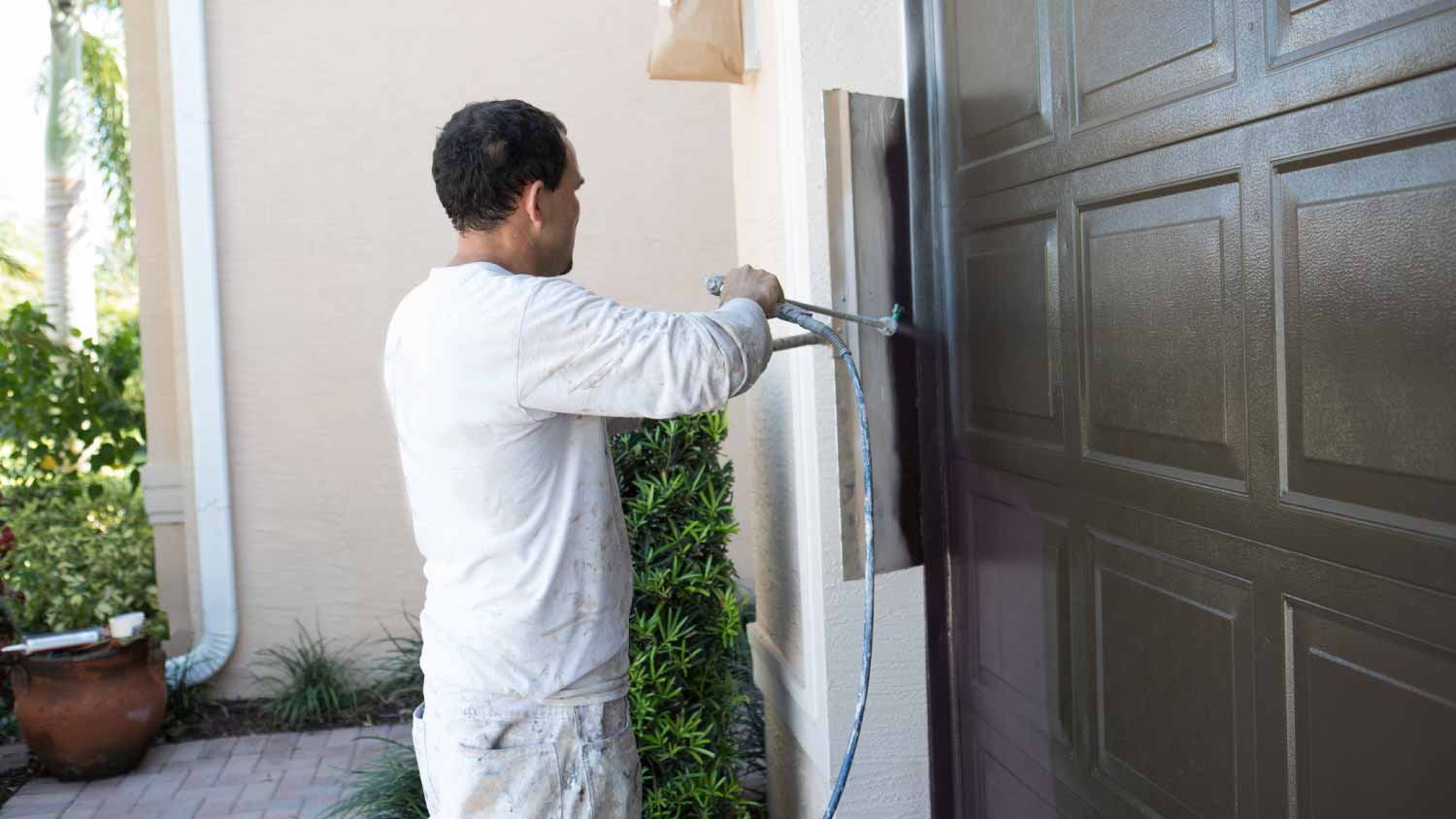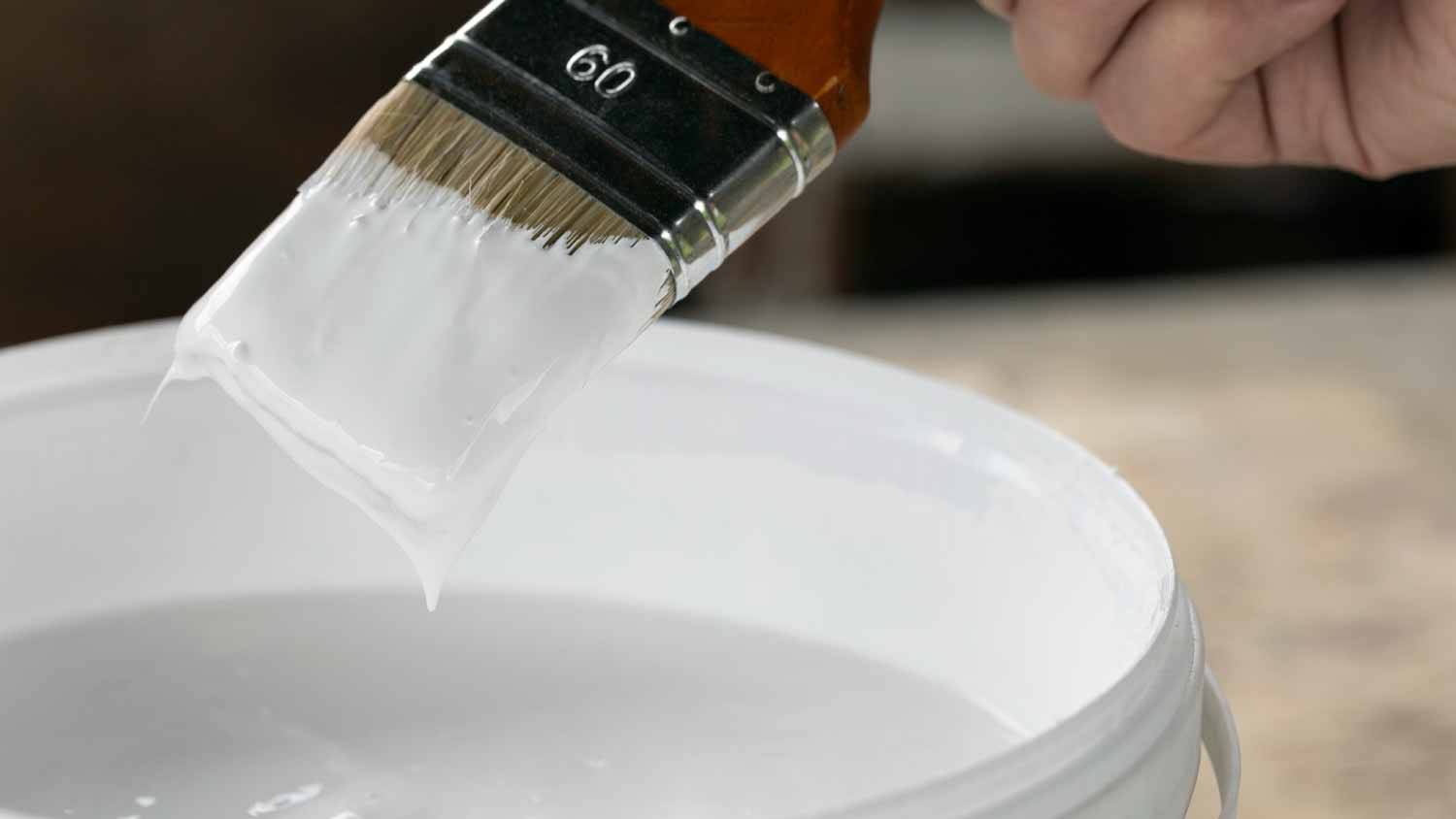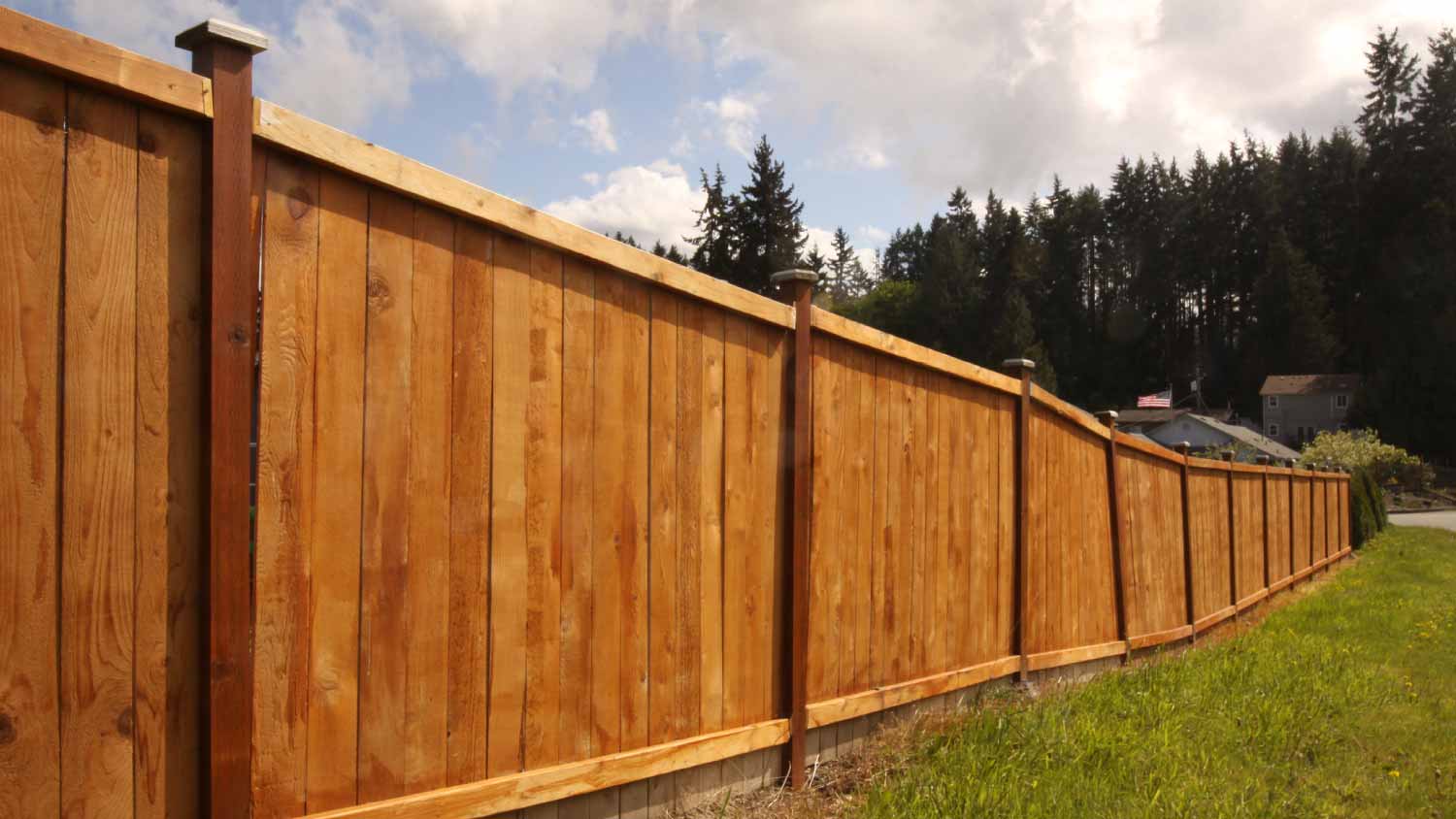
The average cost to paint shutters is $350, depending on the size, number of shutters, and labor. Read this guide to learn more about shutter costs.
These paints will ensure your garage door and its color stand the test of time


If it’s time to rejuvenate your home’s façade, don’t forget about your garage door. This feature has its own particular needs that are unlike most of the other features of your home due to its exposure and frequent use. To choose the best paint for garage doors in your home, you’ll first need to consider a handful of factors like harsh weather and your door’s material.
The following guide will help you choose a paint type that provides even coverage and protection and looks good no matter what you’re working with. That way, you can focus on the more important next steps, like figuring out how to paint a garage door yourself.
When deciding on the best paint for metal, vinyl, or wood garage doors in your home, there are a couple of things you’ll want to consider first. The list below breaks down all your options, including the pros and cons each offers and which is best for which type of garage door.

This water-based paint is suitable for all kinds of exterior painting projects, from painting your deck to revitalizing your garage door. In particular, it’s a natural fit for materials like wood, but it might not be the right choice for metal or vinyl because it’s not as adhesive as other options.
Doesn’t change color with light exposure: Even if your façade faces the sun most of the day, the color of your garage door will always be the same.
Requires fewer coats and is easy to clean up: This option is a good pick for those without a lot of painting experience because it’s highly forgiving. Cleaning up spills is easy to do with a bit of dish soap and warm water, and you won’t need to apply as many coats of paint as you might with a different variety.
Available in many different finishes: No matter what effect you’re trying to achieve—whether matte, semi-gloss, or satin—there’s a latex paint option that will get the job done.
More likely to crack or peel over time: Latex is less elastic than other types of paint and doesn’t adapt as well to temperature fluctuations. If you live in a climate where the weather conditions shift rapidly, it might be in your best interest to consider another option for your garage door.
More likely to require a primer: Although you need fewer coats when working with latex paint, you will need to apply primer to ensure proper adherence to materials like metal and vinyl. Plus, doing so will make brush strokes or uneven shading less likely to stand out.
May provide uneven coverage: Without a primer coat, latex paint is more likely to produce noticeably uneven coverage no matter how many coats you apply.

Acrylic paint is also water-based, but it contains additional chemicals that make it more flexible and resistant to external forces. For this same reason, it’s also a bit harder to clean up and emits a higher amount of VOCs than other water-based options, like latex paint.
UV-resistant and weatherproof: Be sure to let acrylic paint cure completely for one month before exposing it to water to ensure your hard work doesn’t wash away. After that, it can easily stand up to harsh weather and won’t fade in the sun. Once it has dried, it’s also less likely to develop mold or mildew and will adapt more easily to temperature fluctuations.
Adheres more easily to surfaces: You won’t have trouble getting acrylic exterior paint to stick to any kind of material, whether it’s metal, wood, or vinyl (no primer necessary). Plus, using acrylic on wood garage doors can look exceptionally chic.
Speedy dry time: A single coat of this paint type will be completely dry within 20 to 30 minutes after application (in suitable weather), making it easy to complete multiple coats in one afternoon. By contrast, a single layer of latex paint takes upwards of an hour to dry in ideal conditions, and even then, you’ll have to wait four hours between coats.
May require more coats than other paint options: While a primer coat isn’t necessary for acrylic paint, you may need more coats than other options to get even coverage.
Fewer finish options available: You may not always get the exact appearance you’re going for with acrylic paint because it doesn’t come in as many finishes as latex paint.

Although oil-based paints create great results, there are a handful of reasons why professional painters use them less and less. Before you choose an oil-based paint, check out the pros and cons of using it on your garage door.
Provides even coverage with just one coat: Oil-based paints are thicker than their water-based counterparts and will more easily cover up old colors with a single coat.
Long-lasting and durable: This paint is unlikely to chip or peel over time and is resistant to scuffing and scrapes from all sorts of external forces—from rough-housing dogs to falling branches.
Easy to apply: While water-based paints can be hard to roll out or paint on, oil-based paints easily slide onto surfaces.
Emits strong odors and harmful volatile organic compounds (VOCs): Because of the high quantity of VOCs that oil-based paints produce, you would need to work in well-ventilated conditions and with an air-filtering face mask if you choose oil-based paint.
Difficult disposal process: It’s not safe to throw oil-based paints in with the rest of your trash because it’s highly flammable and more likely to contaminate objects that may be headed to a recycling facility.
Not UV-resistant: Unlike latex and acrylic paint, oil-based paint is more likely to absorb the sun’s rays and darken as a result.
Slow dry time: If you’ve decided that oil paint is the only one for you, prepare to wait between six and eight hours for it to dry completely.
More expensive than other types of paint. In general, you can expect to pay up to $80 per gallon of oil paint.
Although not always necessary, adding a coat of primer to your garage door before painting it widens the possibilities of what you can do. For example, oil-based primers allow topcoats of any variety to adhere more easily, regardless of whether your garage door is metal, wood, or vinyl.
Similarly, if you or someone else painted your garage door in the past, starting with a layer of primer will prevent previous shades from shining through. This is especially true if you're going from a darker color to a lighter color or painting a door to look like wood.
The decision to go with a pro or do the job yourself depends on your comfort level with paint and the time it takes to get it right. Painting large surface areas isn’t the easiest task, and if you do need a primer, that can increase the overall time spent on the job. If you’d rather use that time enjoying a pool party or tending to your garden, a local exterior painter would be more than happy to tackle it for you. Plus, they can give you quick and pristine results.
Be sure to check any company’s reviews and chat through details beforehand so you feel confident in the results you achieve. If you’re ready to tackle your garage door as a DIY project, ensure you have everything you need to paint an exterior before starting.
Audrey Bruno contributed to this article.
From average costs to expert advice, get all the answers you need to get your job done.

The average cost to paint shutters is $350, depending on the size, number of shutters, and labor. Read this guide to learn more about shutter costs.

Painting a garage door is one of the most impactful projects you can undertake with a smaller budget. Learn what makes up the total cost, as well as tips on how you can save.

Looking to give your fence a refresh? This guide explores the cost to stain a fence—and the cost to paint it, too— so you can budget for your project.

Window shutters and brick exteriors are like peas in a pod, but only with the perfect color combination. Here are the best shutter colors for brick houses.

The sky's the limit when it comes to choosing an exterior green house color. Whether you’re going subtle or bold, pick from these 11 tried-and-true shades.

Planning to stain a fence? You’re likely wondering: How much stain do I need for my fence? Figure it out with our fence stain calculator.